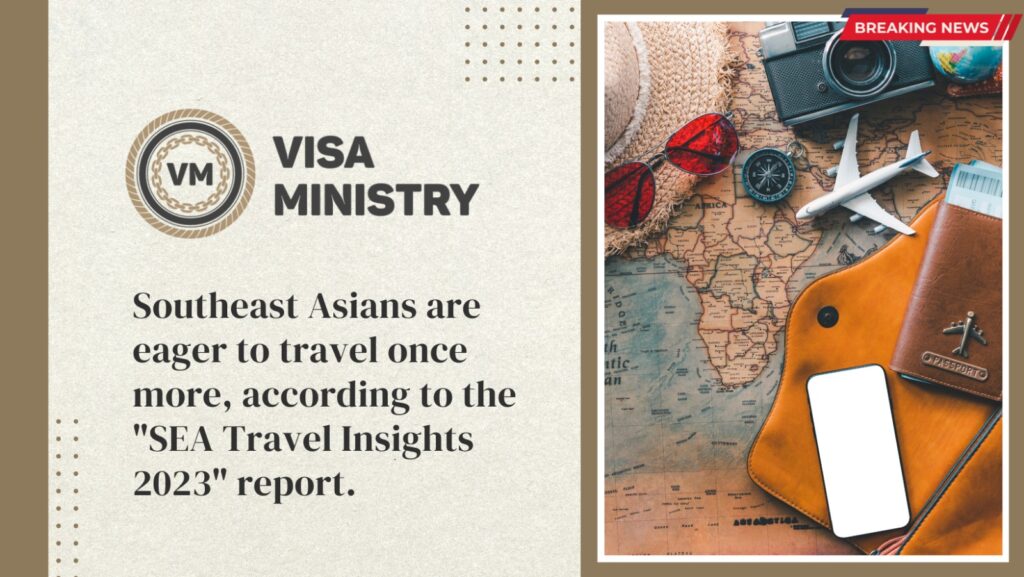The most recent SEA Travel Insights 2023 study from GrabAds, the advertising division of Southeast Asian (SEA) superapp Grab, demonstrates that travelers’ intentions to travel are still strong. Grab users were polled, and 72% of them said they would travel overseas at least once in the upcoming 12 months, up from 39% when borders reopened in 2022, showing an increase of 84% in travel intention in just one year. Brands can seize this chance to shift their focus from short-term “revenge travel” campaigns to long-term repeat-customer planning as the demand for travel is steadily increasing.
Additional information about travel preferences, routines, and behaviors in the area is revealed in the report.
‘Stress-free’ solutions are prioritized by families
Families make up one of the largest consumer groups for travel in 2023; 86% of travelers anticipate taking at least one trip with others. Although having fun and playing games is fine and dandy, it’s obvious that these family vacationers put safety and convenience above all else. Group travel is, however, no easy task, especially when traveling with youngsters.
For instance, family suites and connecting rooms (65%), kid-friendly amenities (58%) and safety measures like child-proofing or guarded balconies (48%), are among these travelers’ top priorities when choosing their lodging. In order to better connect with families that travel with children, travel advertisers can reassure families that they can leave their anxieties at the front door and emphasize advertisements with “family-friendly” or “child-friendly” advertising.
Business travelers are once again prioritising ease and safety.
A sizable portion of respondents were also business travelers: 40% of those who plan to travel anticipate making 4 business trips on average over the next 12 months, an increase of 14% over the previous year. For this group, choosing a safe neighborhood (46%), being close to eateries and public transportation (57%) were the most important factors when booking accommodations.
Travelers avoid surprises and uncertainty.
Travelers are starting to favor planning more and more after the pandemic’s two years of disruption.
For long-distance trips (6 to 16 hours), 64% of respondents indicated that they would begin making travel plans at least a month in advance. The percentage fluctuates around 55% for locations that are 3 to 6 hours distant and 51% for short trips (under 3 hours). Nearly half (47%) said that their spending plans are set weeks before they go for their trip. It’s important to note that most travelers like to organize their daily schedules on their own. Additionally, according to a survey of travelers this year, 62% stated they would purchase travel insurance to cover their vacations.
Travel firms should start marketing initiatives to influence travelers early in the discovery phase, while they’re still researching and weighing their alternatives, in order to take a bigger piece of the market.
It’s important for brands to create loyalty programs.
Nine out of ten consumers in the area prefer to shop when a firm offers a loyalty program, according to a 2023 customer intelligence survey. However, according to our data, 78% of Southeast Asians do not participate in any hotel loyalty programs. There is clearly space for repeat business given that 73% of respondents plan an average of three leisure trips over the following 12 months.
This is a fantastic opportunity to inform potential travelers about hotel loyalty programs and the advantages they offer, for instance through gamified or incentivized campaigns with wide appeal and simple redemption procedures.
GrabAds can assist travel brands in staying ahead of these changing travel habits by connecting advertisers to Grab’s enormous first-party data. Tapping into GrabAds’ hyperlocal insights to appeal to Southeast Asian travelers. For instance, GrabAds and Mediabank Inc. recently collaborated to develop a campaign for the Japan Tourism Agency (JTA) to encourage visitors to ‘Discover Another Side of Japan’ outside of the typical tourist attractions. The campaign linked JTA to the numerous Grab users who rank Japan as one of the top foreign travel destinations by utilizing Grab’s online-to-offline ecosystem and strong understanding of Southeast Asian consumers.
“Millions of Southeast Asians use Grab every day, creating a wealth of hyperlocal insights that enable brands and advertisers to build deep and meaningful connections with their consumers,” stated Jennie Johnson, Head of Marketing at GrabAds. Data from GrabAds showed a sharp rise in international travel intentions of 84% since last year. As knowledgeable Southeast Asian travelers fantasize, plan, book, and experience travel, brands need to alter their focus away from short-term impulse advertising based on pent-up lockdown FOMO (fear of missing out) and toward building long-term relationships with these travelers.
“It could be as easy as keeping in touch with customers throughout the year or using online and offline channels to advertise the newest deals,” she continued. For instance, our Grab fleet and app are used in the campaign we developed with Media Bank Inc. for the Japan Tourism Agency to creatively target platform users. We at GrabAds are looking forward to collaborating together with travel and tourism firms to develop and offer Southeast Asian travelers an interesting, dynamic travel experience.
Source- Travel daily

